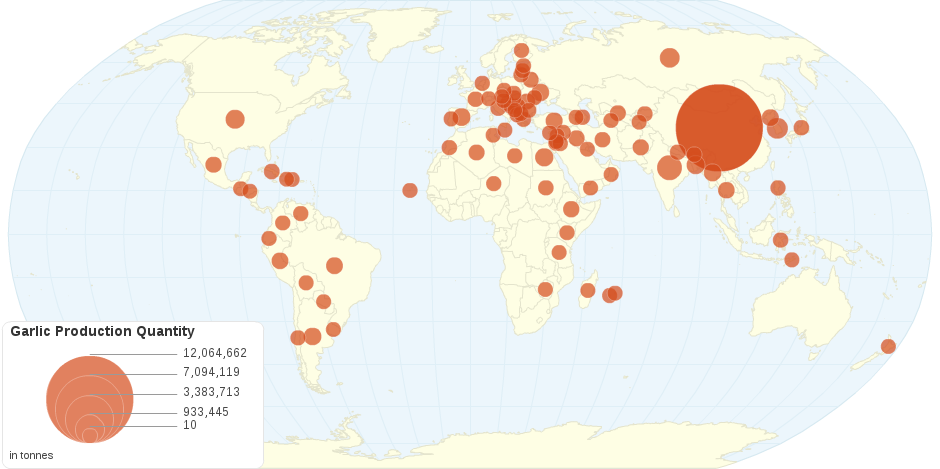This chart shows the Garlic Production Quantity by Country.
Allium sativum, commonly known as garlic, is a species in the onion genus, Allium.Its close relatives include the onion, shallot, leek, chive,and rakkyo.With a history of over 7,000 years of human consumption and use, garlic is native to central Asia,and has long been a staple in the Mediterranean region, as well as a frequent seasoning in Asia, Africa, and Europe. It was known to Ancient Egyptians, and has been used both as a food flavoring and as a traditional medicine.
Allium sativum grows in the wild in areas where it has become naturalized. The "wild garlic", "crow garlic", and "field garlic" of Britain are members of the species Allium ursinum, Allium vineale, and Allium oleraceum, respectively. Identification of the wild progenitor of common garlic is difficult, due to the sterility of its many cultivars which may all be descended from the species Allium longicuspis, which grows wild in central and southwestern Asia.
Garlic is easy to grow and can be grown year-round in mild climates. While sexual propagation of garlic is possible, nearly all of the garlic in cultivation is propagated asexually, by planting individual cloves in the ground.In colder climates, cloves are planted in the autumn, about six weeks before the soil freezes, and harvested in late spring or early summer.
The cloves must be planted deep enough to prevent freeze/thaw, which causes mold or white rot.Garlic plants are usually very hardy, and are not attacked by many pests or diseases. Garlic plants are said to repel rabbits and moles. There are different varieties or subspecies of garlic, most notably hardneck garlic and softneck garlic.
The latitude where the garlic is grown affects the choice of type, as garlic can be day-length sensitive. Hardneck garlic is generally grown in cooler climates; softneck garlic is generally grown closer to the equator. Garlic scapes are removed to focus all the garlic's energy into bulb growth. The scapes can be eaten raw or cooked.
9 years ago

